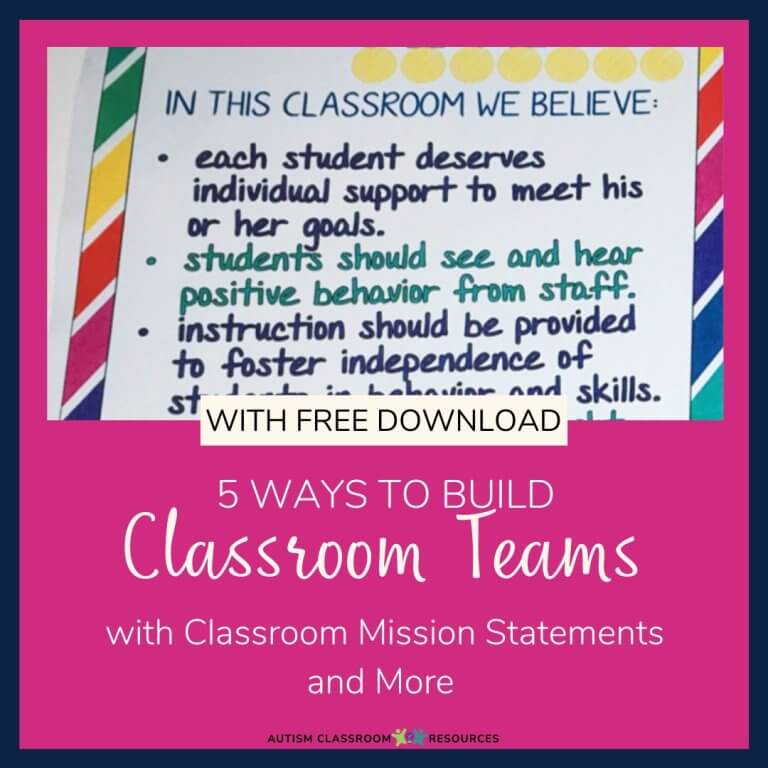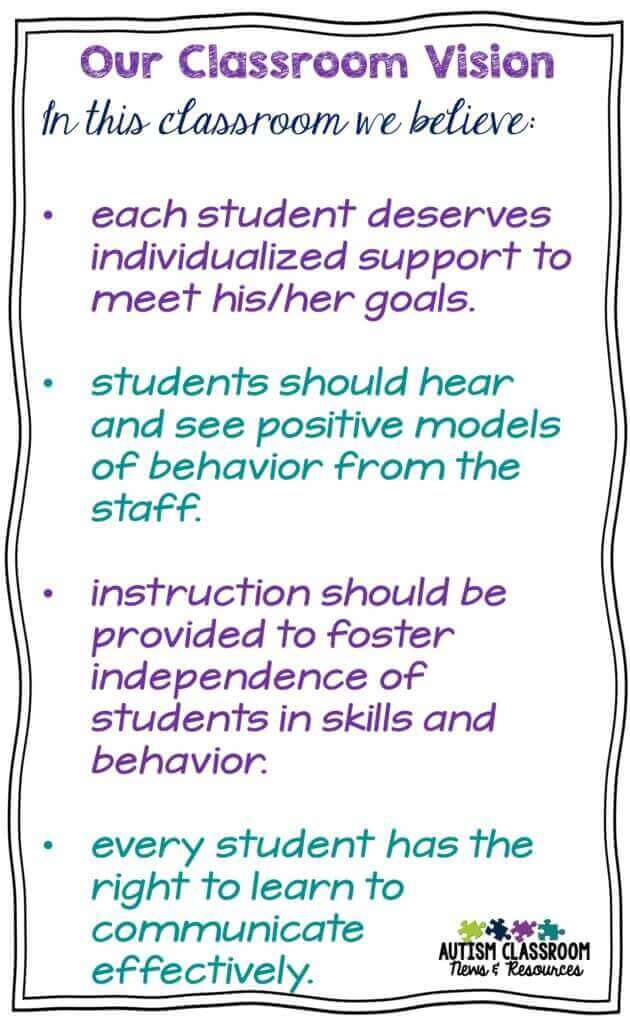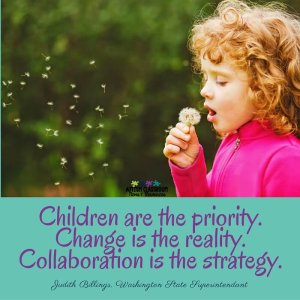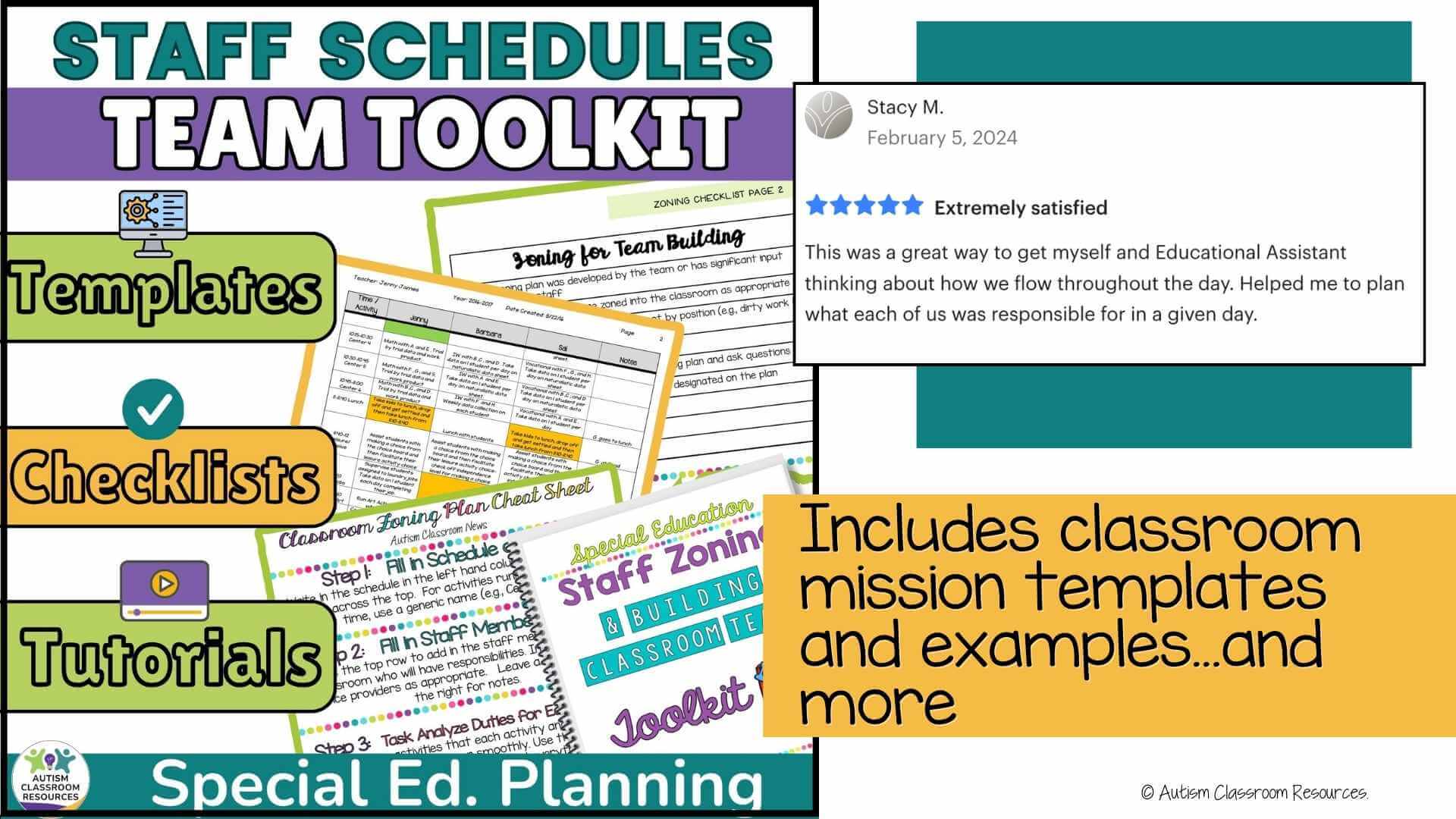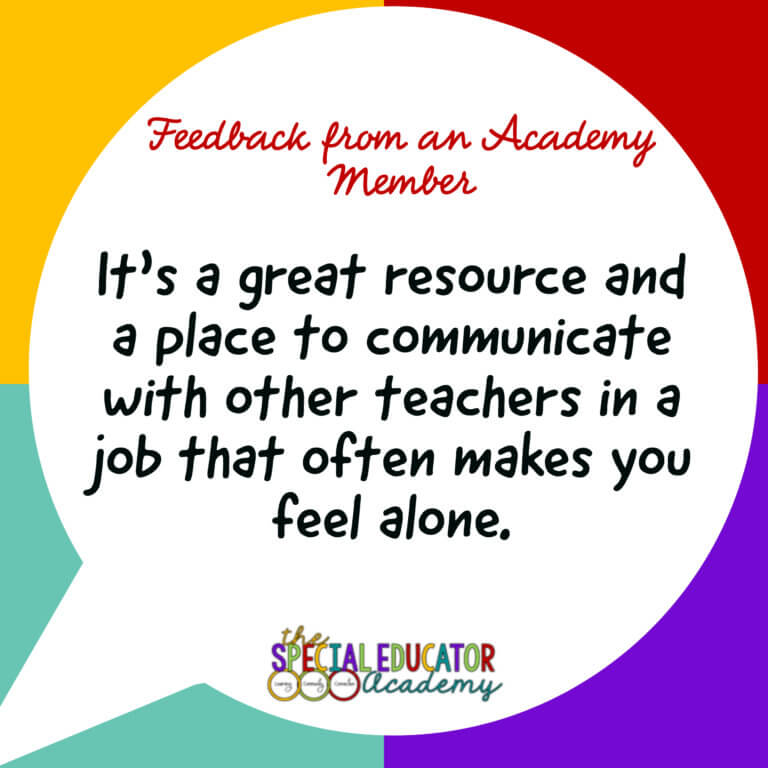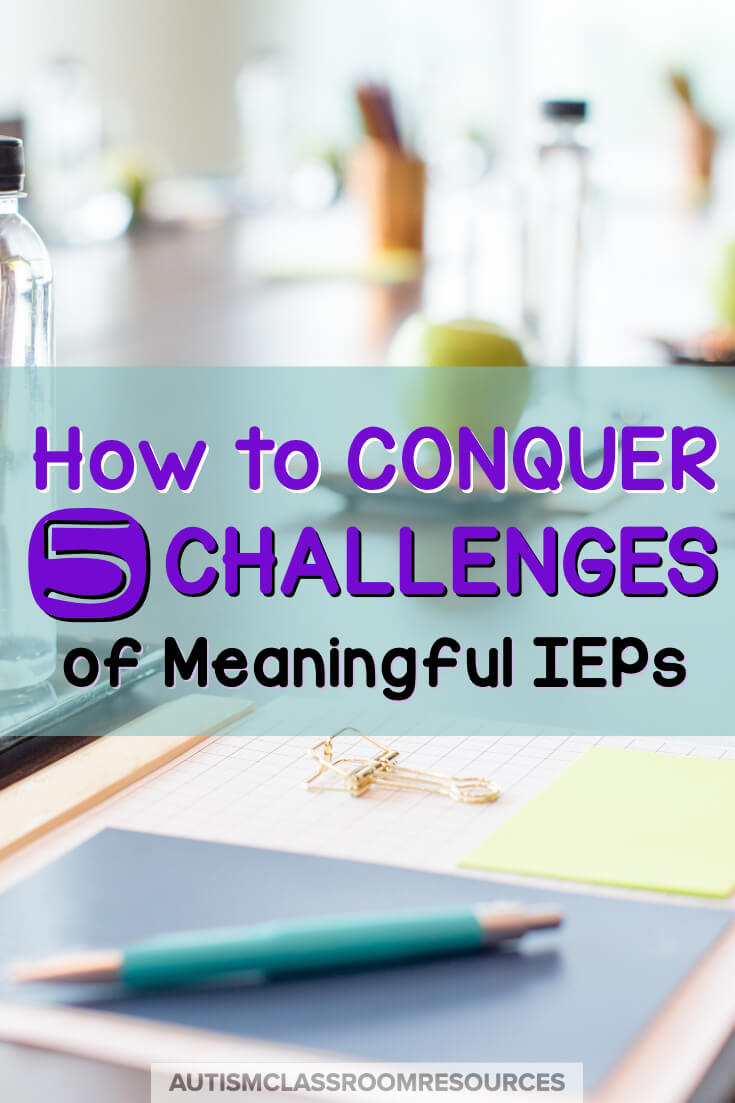Classroom mission statements are a great way to build teamwork in the special education classroom. They can help you get everyone on the same page. And they are great for training staff and resolving staff disagreements.
In this post I have 5 ways to build teamwork in the classroom including classroom mission statements. Plus there is a free zoning plan at the end and tools to help you get your team all on one page.
Table of Contents
One problem I frequently get questions about is ways to handle differing opinions of the way to do things in the classroom. Frequently the teacher is newer to the classroom or school than the paraprofessionals.
Sometimes the paraprofessionals have more extensive experience than the teacher. Sometimes members of the classroom team come from very different backgrounds and have different ideas of how to handle discipline, interact with students, and how to implement strategies. This leads to differences in how the team members approach problems and can lead to differences between what the teachers want the class to reflect and what the paraprofessionals are comfortable with.
During our discussions, I’ve talked about how it all comes back to teamwork. Building a team from the beginning and continuing to foster collaboration as a team is the key to bridging the differences and getting everyone working together.
Our job in the classroom is stressful enough at times; adding interpersonal differences into the issue just complicates things more. So today I want to focus on 5 ways to build that teamwork to develop and maintain good collaboration among the staff.
1. Establish a Classroom Mission Statement
Imagine what you want the culture or the feeling of your classroom to be. Gather ideas from all the staff about what they think the environment of the classroom should be like. How do you think the staff should talk to students?
At the beginning of the year, share the classroom mission statement of what you want the classroom to be like and solicit ideas from the rest of the staff about how they feel.
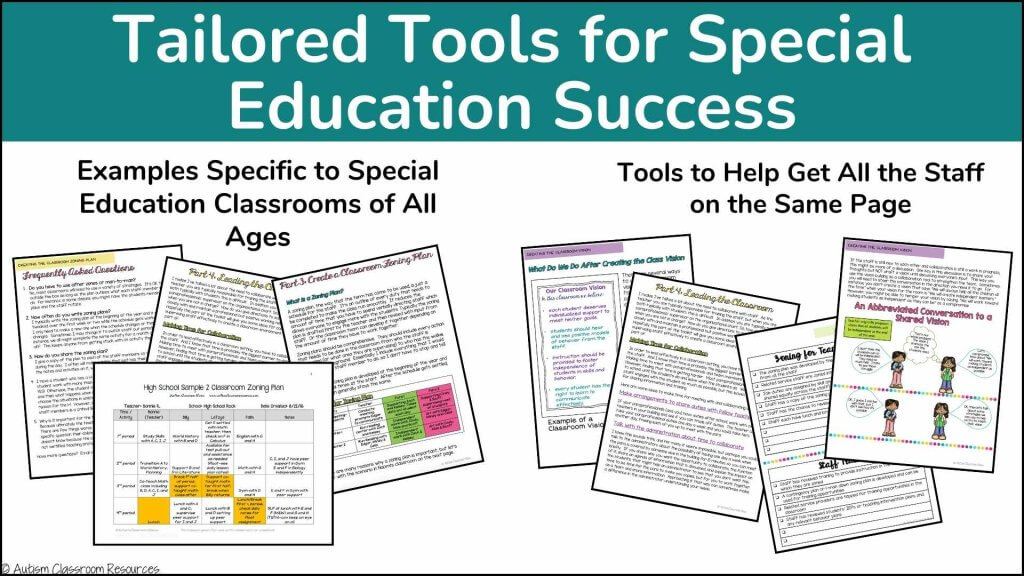
I know that with everything there is to do, this may seem like a lot of talking and discussion. And talking about the culture of the classroom when people have different points of view might be hard to talk about at times.
However, it’s better to have these potentially uncomfortable conversations early rather than having a year in which everyone does their own thing and not everyone agrees with it.
As the teacher, you can lead this conversation and set out what you think are the important elements of the classroom mission statement. Important elements might include: positive interactions with and among the students and staff, more positive comments towards the students than negative, not talking about the students in front of them if at all possible, focusing on independence as the key goal for each student, and treating each student as an individual.
You may or may not want to write the classroom mission statement down and post it in the classroom. You may want to do it more informally and just have it posted through quotes or reminders that support the vision in the classroom.
Either way, focus on the 2-3 elements that you think best define the vision for the culture of the class.
A classroom mission statement might be:
In classroom 3, we value each student’s independence and need for individual attention. We want to provide positive models to our students in our language and actions and help them to be as independent in all skills as possible.
2. Value What Others Say
This may seem pretty obvious, but it’s important to make sure that you not only listen to others but you solicit team members’ input into how the classroom is run. When creating the classroom mission statement for the classroom, gather others’ input and listen to it.
If you can, incorporate it into the mission or focus of the room. If it’s not something you can live with, discuss it. In discussing it, listen carefully. It’s important to develop the classroom mission statement and solve problems collaboratively. This may not always be possible, but valuing others’ perspectives is critical to making it work.
3. Use “I” Messages
I messages are essentially starting statements with “I.” Saying “I feel that the classroom should focus on the positive behaviors the students show more than the negative.”
Focusing on things you have done or said in the past is another good way to put ideas out there without dictating or demanding people adopt your solution. It can soften a correction when you say, “So many times I have almost lost my cool with X student, and I had to just walk away and take a break.”

This makes having a differing idea or opinion easier to hear and makes you relatable by acknowledging that you have had the same struggle. In discussing issues within the classroom, use “I” messages as often as possible.
4. Keep the Focus on the Students, the Outcomes and the Goals
The most significant strategy that can be used to build collaboration within the class is to make sure that the focus stays on the most important piece of the job–the students. If you are disagreeing or feel you need to ask staff to do something differently, make sure you are stating it in a way that makes it clear it is for the good of the students. Having a classroom mission statement from #1 helps because you can refer back to it.
For instance, rather than saying,
You can’t yell at the students. It focuses on the negative behavior and only makes the behaviors happen more frequently.
Try saying,
I have a hard time with when Brian screams too and have to walk away sometimes to take a break to keep myself from yelling at him to stop. I know it’s really frustrating. Our data show that being positive with Brian and redirecting calmly is more likely to calm him down so we have to help each other try to stay calm with him.
Another example might be when a staff member is providing too much support for a student (e.g., doing his art project for him).
I know it’s hard to wait Sydney out when he is working in art because he is so slow to follow directions. It’s hard sometimes because I know that I think the rest of the class needs to move on but we are still waiting for him. It’s OK if Sydney doesn’t finish parts of the project. The important thing is we want Sydney (and all our students) to learn to be as independent as they can be, so focusing on his doing some smaller part on his own is more important that him finishing the whole project.
5. Ask How You Can Help
One of the surest way to help facilitate solutions to a problem is to ask how you can help solve it. It puts the problem out there as something to be solved rather than something the other person needs to stop/fix etc. Ask how you can assist them in giving a different response. Clearly if you have established a classroom vision statement and everyone is on board, it will be easier. If everyone isn’t onboard, it might be necessary to state the mission, but then ask how you can help to get them to buy into it.
Asking how you can help them takes the criticism out of the feedback and sets you up as an ally rather than a supervisor. Our goal is always to solve the problem rather than to be “right.”
Instead of:
I know that it’s really hard to stay right on top of Sally in the hallway, but you have to make sure she doesn’t pull the hair of the other kids.
Try:
I know that it’s really hard to stay right on top of Sally in the hallway and you have done a great job of that. And sometimes it’s really hard to catch her before she tries to pull hair. How can I help you with that?
Want tool to help get your classroom team on track? Check them out below!
Grab Everything You Need to Get Your Classroom Team Humming!
Set up your classroom with these paraprofessional schedules and zoning plans for managing your special education team. This toolbox includes cheat sheets, examples, and step-by-step directions to walk you through how to set up your classroom zoning plan for scheduling your staff.

